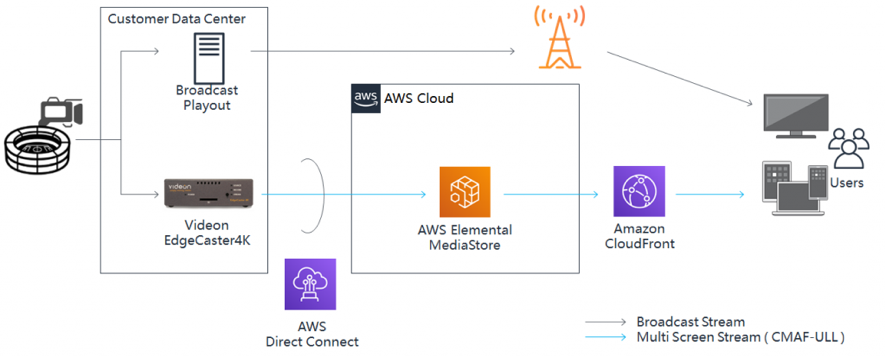AWS for M&E Blog
Fuji television realizes ultra-low latency video delivery of the 2019 FIVB Volleyball World Cup
Originally published on the AWS Japan Blog.
“Ultra-low latency distribution will bring a major change to internet video delivery for multiscreen devices and an improved user experience for user-generated content,” says Mr. Ito, Deputy General Manager, Technology Development Department, Fuji Television Engineering Bureau.
“For the 2019 FIVB Volleyball World Cup (FIVB2019), we set up an environment in just four weeks that allowed tens of thousands of people to watch the games at the same time. We can now easily and quickly achieve an ultra-low latency delivery environment. We are very pleased to be able to use it on a pay-as-you-go basis and to be free from complicated operations during distribution.”
Ultra-low latency (ULL) video delivery is a prerequisite in a variety of use cases, including distribution of live sports and television programs and situations that require interaction between users and distributors. There are several approaches to implementing ultra-low delay distribution, such as CMAF-ULL, WebRTC, LL-HLS, and HLS / MPEG-DASH with truncated segments. Fuji Television needed to prepare its infrastructure and player to deliver live video from FIVB2019, without knowing how many simultaneous viewers the workflow could service or the number of seconds in delay it could reach.
Using AWS media solutions, Fuji Television realized its distribution workflow using CMAF-ULL with a delay of two to three seconds – the equivalent of digital terrestrial broadcasting. With the entire volleyball court projected on the television, viewers could get close-ups of the ace player or the focused player on a smartphone. The improved viewer experience allowed the broadcaster to bring the game closer to fans by enabling them to focus on the player movements and further engaging them in the broadcast program.
The following diagram shows Fuji Television’s ULL video delivery workflow.

- Video signals from the game venue are transmitted to the Fuji Television station and distributed to terrestrial digital broadcasting equipment and Videon’s EdgeCaster4K encoder.
- EdgeCaster4K processes the input video signal to CMAF-ULL HLS/Dash. The structure of one TS file is an 8-second segment and a 200msec chunk.
- EdgeCaster4K outputs a stream to AWS Elemental MediaStore (the origin server) through AWS Direct Connect (a dedicated line).
- A request is sent from the user’s device to Amazon CloudFront using an html5 player from VisualOn. Amazon CloudFront sends a request to AWS Elemental MediaStore and obtains HLS TS files in chunk units.
In order to achieve ULL delivery, Fuji TV faced the challenge of performing high-speed transfer in chunk units (Chunked Transfer) without waiting for file output. In cooperation with AWS, the broadcaster conducted an advanced technology verification of encoders, origin servers, CDNs, and players that allow Chunked Transfer and exhibited the technical references at AWS Summit Tokyo 2019 and Connected Media 2019.
Both Amazon CloudFront and AWS Elemental MediaStore support Chunked Transfer and large-scale distribution, and because they are managed services, Fuji Television could shift resources from complicated operations such as scaling according to distribution and switching support when a failure occurs, allowing Mr. Ito and his team to focus on the video delivery. Multiscreen with ultra-low delay distribution has been expanded to other sports broadcast programs since then, and Fuji Television is working on improving distribution parameters and players to enhance the viewing experience of broadcast programs.